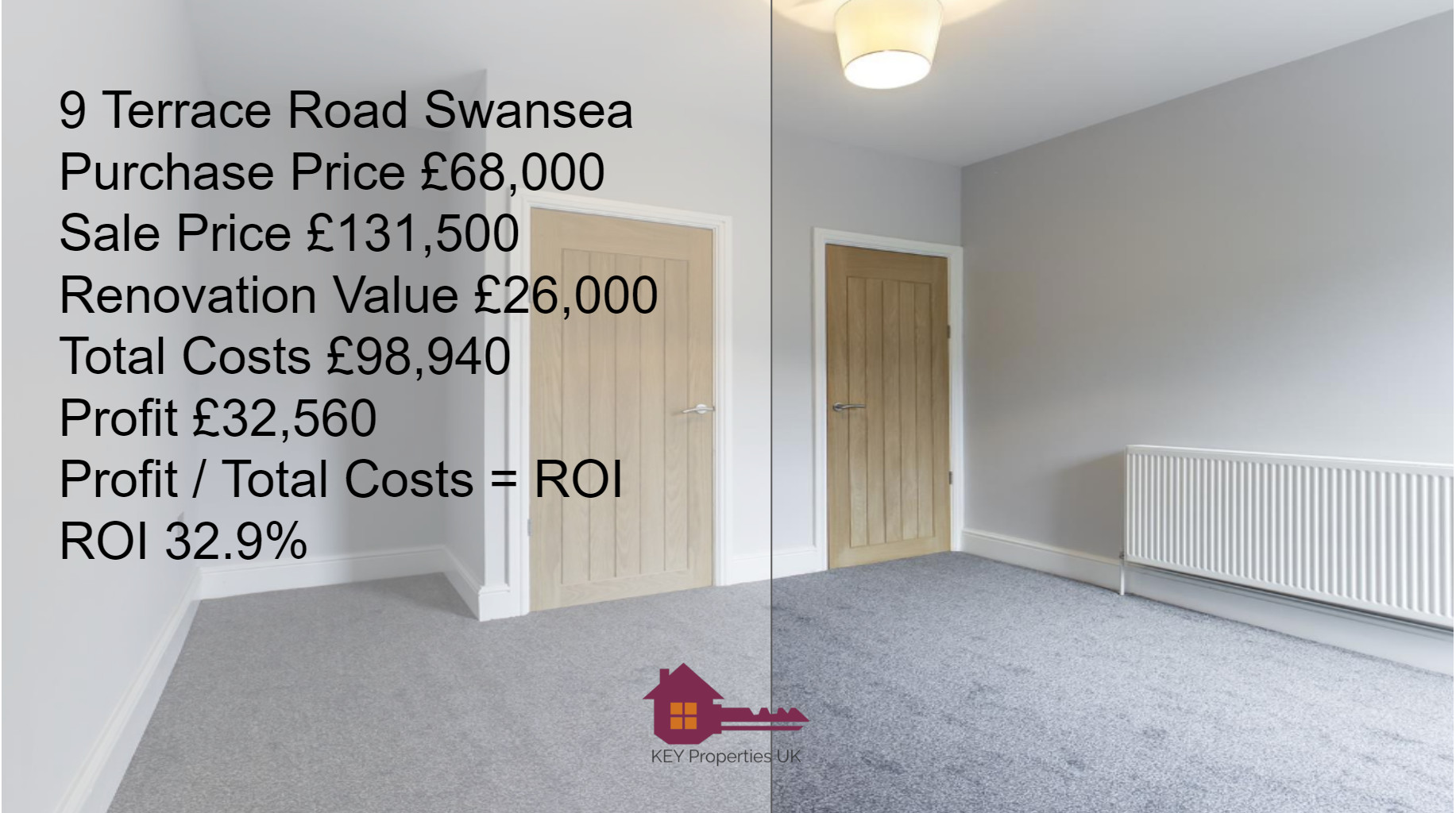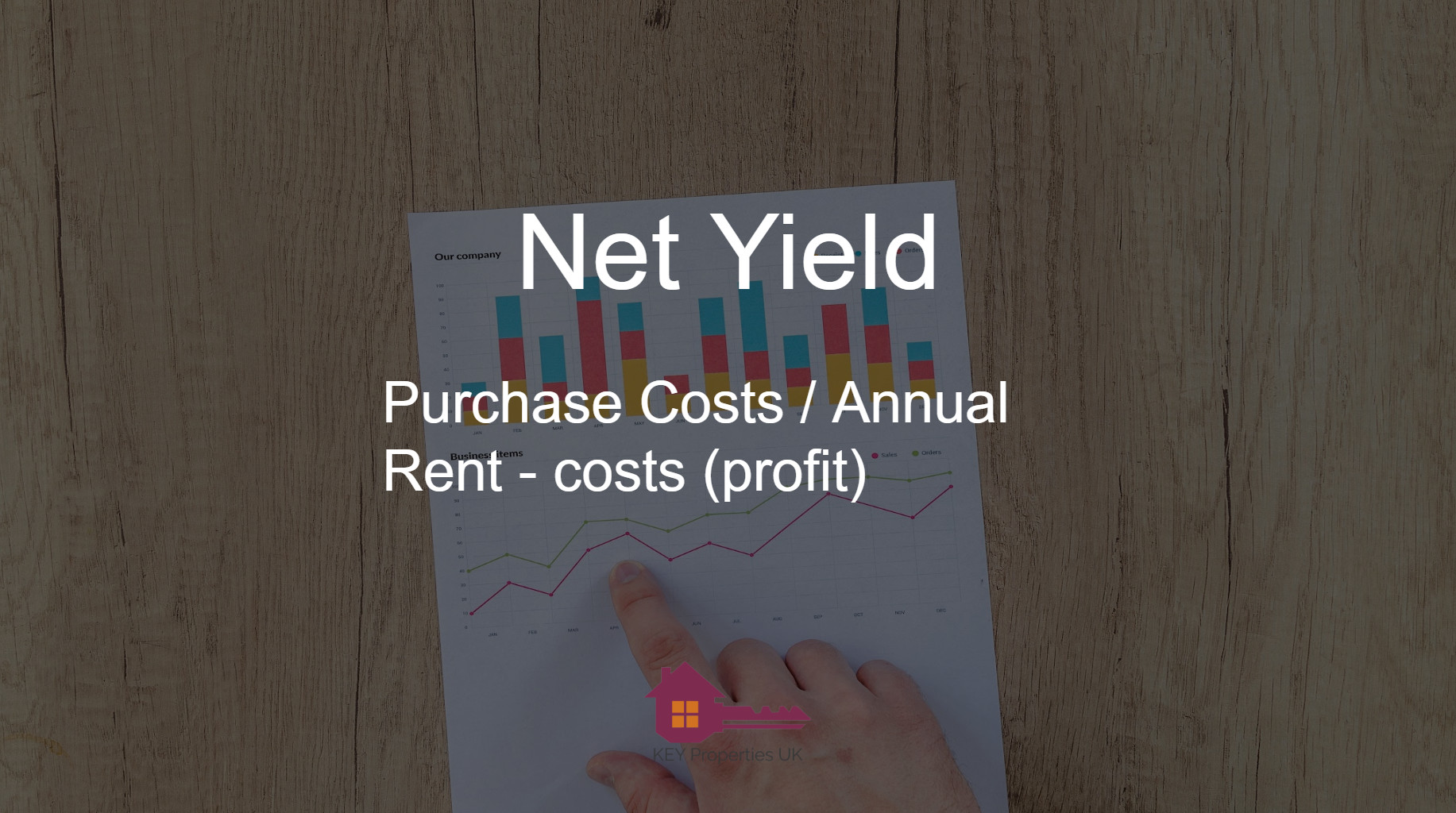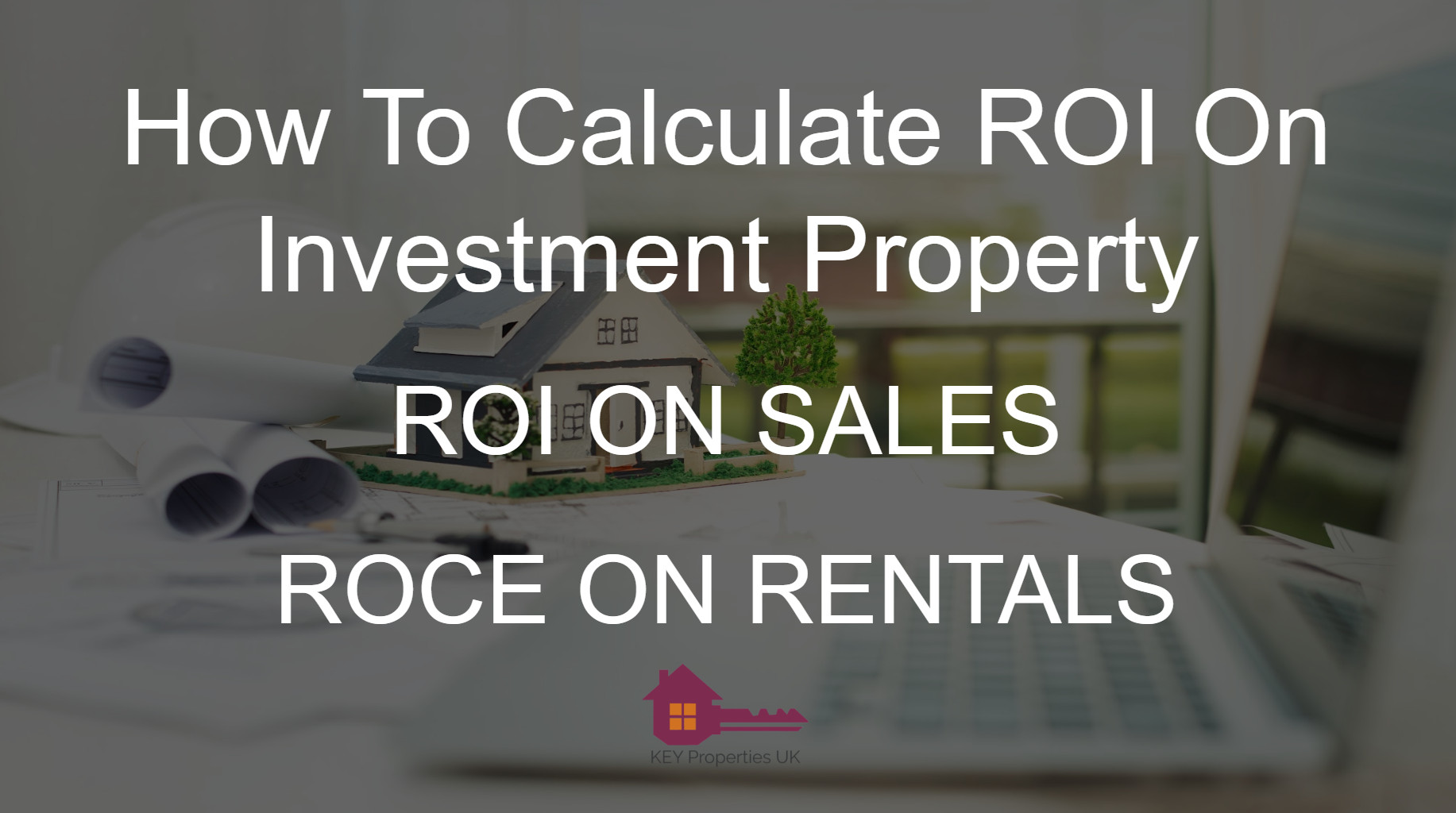Evaluating Investment Opportunities: The Importance of ROI
Return on investment, or ROI, is a measure of the profitability of an investment. It is calculated by dividing the net profit of the investment by the initial cost of the investment, and expressing the result as a percentage. So for property specifically I’m going to answer the question in this article, how to calculate the ROI of investment properties.
Calculating the return on investment on an investment property sounds simple, it is simple, but as ever experts complicate things and there are actually four main ways of doing this, and you can wiggle the numbers a little bit to your advantage. So if you’re looking at investment property, somebody’s presented you with a deal and you’re not quite sure; then this is the article for you because I show you the four different main ways of calculating the return on investment properties.
https://en.wikipedia.org/wiki/Return_on_investment
I say the two that are vanity metrics rather than sanity metrics and I show you the two that most people don’t look so much but are actually the key ones. So we’ll look at ROI, ROCE Gross Yield and Net Yield.
Calculating ROI On Investment Properties
Return on investment or ROI the measure of the profitability of an investment is calculated by dividing the net profit of the investment by the initial cost of the investment; so it’s the net profit divided by the cost with the result expressed as a percentage.
The higher the ROI the more profitable the investment so calculating the ROI on an investment property can be a particularly useful tool for us to determine the feasibility of a potential purchase and for comparing different investment opportunities.
The different metrics we’re going to look at today are ROI (Return On Investment), ROCE (Return On Capital Employed) (we’ll get into what the capital employed is later on, it’s a brilliant metric for rental properties), The Gross Yield on the Net Yield.
Gross and Net I think now more vanity than sanity because ROI and ROCE are the two key ones. Most people focus on these two but are actually ROI and ROCE are the absolute keys to success in property investment.
Don’t get me wrong, they’re all important, they’ve all got their role but ROI and ROCE outweigh Gross and Net Yield every day of the week and I’ll debate anybody on that if you’d like to chat.
GDV (Gross Development Value)
So just a little bit of jargon for people who are new to property investing. GDV is the gross development value. So if you have a property and you sell it for £250,000, then that is the gross development value. If you have that same property and you turn it into four flats and those flats are worth 110,000 pounds each. Then your Gross Development Value at that stage is £440,000 Each flat sells for £110,000 times 4 for £440,000, the value of your project.

So let’s go back a step and look at ROI. ROI is Return On Investment which is the net profit divided by the amount invested expressed as a percentage and we’ll go through exactly how to put that together now.
So here’s a picture of an investment property that we completed long ago, number nine Terrace Road in Swansea we purchased it for £68,000, sold for £131,500 pounds after renovation works. We spent £26,000 on doing it up. The total costs were £98,940. I know that the renovation value of the purchase price doesn’t add up to that amount but there are other costs such as taxes, sales taxes, stamp duty etc.
In this case we purchased at auction so there were auctioneers fees, all sorts of fees go on top you have to make sure you know the total costs, not just the headline costs because the total costs are the costs that you actually pay.

So total cost is £98,940, profit therefore was £32,560, and then you can divide those together to get the ROI, which in this property was 32.9%. Now on a normal house flip if you’re getting 20% you’re doing well. In this one we got 32.9% very, very pleased indeed. There are lots of reasons why we do hit high marks with our flips, location, choosing the right property and you make your money when you buy so choosing the right property at the right time with the right amount of work to do on it = high profits on your investment properties.
For more information about these properties go to the contact us page and book me via the calendly link or send a message via the form.
Why ROCE is my favourite metric for calculating rental investment property returns
So now let’s cover ROCE, ROCE and ROI are essentially the same thing, or at least that’s technically correct and what other people will tell you but ROCE is actually better used as a measurement of rental returns.
This is why ROCE is my favourite metric, because we do a lot of rental properties and this is how you calculate the rental value. So Return On Capital Employed is the money left in after refinance divided by income from the asset which in this case is the property.
ROCE has interesting pronunciations, it can be pronounced Roas (like roast without the T) or in investment circles Rocky. I just call it ROCE ( R O C E), whatever you know it as or whatever you want to know it as in the context of investment in general, it is vitally important in the context of property investment as it can be used to evaluate the profitability of a specific property or portfolio of properties.
That helps investors understand how effectively the capital invested in a property is being utilised to generate profits. A high ROCE indicates that a property is generating strong return on the capital invested in it. While a low ROCE may indicate that the property is not performing as well as expected.

However, it is important to note that ROCE is just one measure of a property’s performance and should be considered in conjunction with other financial and non financial factors such as location, property type, market conditions, and other things that can impact the property’s ROCE over time.
It should just be one thing taken into account when evaluating a potential investment, but if you’re going to pick one number, this is it, it’s ROCE. It’s the one number that means everything. If you had only one number on every property investment you ever did and you could only have one, it would be ROCE.
Here’s an example of the ROCE an investment property of ours earns and the caulculations behind it
Here’s another house that we did. When we finish properties we put tenants into them and we leave them a bottle of wine and a card to welcome them into their new home as you can see on the side there.
So have a look, purchase price. £69,500, renovation value of £28,000, this had a valuation for a mortgage surveyor, it wasn’t sold it, was valued at £130,000 pounds.

This is where it gets interesting for ROCE.. So the total costs spent on this property, including everything, were £100,940. A buy to let (BTL) mortgage, this is not a domestic mortgage, a buy to let mortgage will give you 75% of the value of the property. There are BTLmortgages that will give you more but do not overstretch yourself.
This is how people get liquidated in downturns. Don’t overextend yourself at 80%, 85% or 90% mortgages on your investment properties, have plenty of meat on there; because property over time goes up in value and it does really, really well against any economy over time. But there are still moments and the last thing you want to be in is in negative equity on your investments.
This is your hard earned money that you’re putting into work for you and when you’re putting money to work for you there’s no need to take undue risks. So that 75% buy to let mortgages return to you £97,500 of the £130,000 valuation. Does that make sense?
So yes, to invest in this investment property you would have to put £100,940 out of your bank account into the property, but the mortgage company is giving you back £97,500. The only money left in now is £3,440 because that money is back in your account courtesy of the mortgage against the new uplifted value of the property which was raised value via the renovation works.
This property rented for £750/month so when you take into account the mortgage and the letting costs you’re left with a net profit of £416 25/month.It takes 8.3 x £416.25 to make back the £3,440 left in the property so to get 100% of your money back it will take 8.3 months and you have made back all of that money and from then on so after that 8.3 months this property cost nothing and is in profit.
The £3,440 is the Capital Employed part of ROCE, it’s the money left in the property and it’s what we can calculate our returns against.
It’s worth reiterating, all the money is back in the bank account. You have a property worth £130,000 in your possession. That property will go up in value over time and when it does, up to 25% of what you own goes up because you get all of the uplift in value.
You see the bank effectively owns 75% via the mortgage, you own 25%, but if that property goes up to £150,000 then that £20,000 uplift is yours in your pocket, not the banks, it is yours.
That’s the beauty of property as it’s a leveraged asset. Banks will give you mortgages on 75% of the value of the asset and that allows you to have increased capital growth as well as return on capital employed when you use our model, which is to refurbish and refinance a property to raise it to a new value.
It’s called buy refurbish refinance (BRR). You can achieve phenomenal Returns On Capital Employed. This was a particularly special one 145.2%. 100% is 12 months exactly to get all your money back, 200% is six months exactly.
How To Calculate Gross Yield For Investment Properties

Gross yield is the purchase cost divided by the annual rent. Here we’re back at Terrace road. Purchase £68,000, all costs £98,940, rent at £650/month or £7,800/year. The purchase price divided by the rent equals the Gross Yield which was 7.88%. You can quickly glance over that and decide if it looks like it might be reasonable or not for what you’re looking for and move on from there; but you can see it doesn’t take into account the finance, the returns and all the other bits, it’s just a basic percentage.

It’s very simple and also it’s gross, gross is like so many things in property and in any other business, you need the Net.
How To Calculate Net Yield For Investment Properties

So let’s look at Net Yield, again back on Terrace Road.
Purchase £68,000 all costs £98 940. Rent to £650 pounds/month or £7,800 pounds a year minus the letting costs equals £6,864/year.
Purchase costs including everything divided by the rent minus the cost equals the net yield and the net yield on this is 6.94%. So that doesn’t take into account refinancing, that doesn’t take into account anything that the mortgage company gives back and doesn’t take into account monthly costs from the mortgage company. It’s just a basic percentage figure.
Net yield is a phenomenally powerful number and so is the gross yield, gross numbers in any business you’ve got to be careful of because the overall numbers on the net is the true value, the true number.
Net in property is especially important as it will give you a really good understanding of roughly what the rent is going to be in proportion to the value of the property. However, when you take into account refinancing, sales, etc, the two that really count are ROI, and ROCE.

So how do you calculate the ROI on an investment property?
Well, the answer is on sales, where you flip a property where you do it up and you you sell it, where you buy it for low value and then you sell it on; the figure to use is ROI (return on investment). If you have one figure to use it would be that one.
But if you’re renting your property out, it’s ROCE (return on capital employed) all the way. Return on capital employed is everything in rental properties. It tells you everything and it tells you when you get 100% of the money back that you put in. So you own that property for free and you’ve got all your money back plus the income plus the asset plus the capital growth.
ROCE (Return On Capital Employed) is the key number.
We do that every single day here. If you’re interested in investment properties, that’s how we do it. We do everything from the basic level investment properties like I showed youwhere we renovate a property, revalue it and rent it out to full developments where we’re converting houses into HMOs which are shared houses, conversions of flats, which don’t think that’s just like a renovation. You’ve got all sorts of fire regulations. And sprinkler systems access is really detailed. It’s incredible. And then we’ve got lots of other developments like that as well.
I hope those have helped you especially if you’re new to property investment, return on investment on sales and return on capital employed on rentals.


Leave a Reply